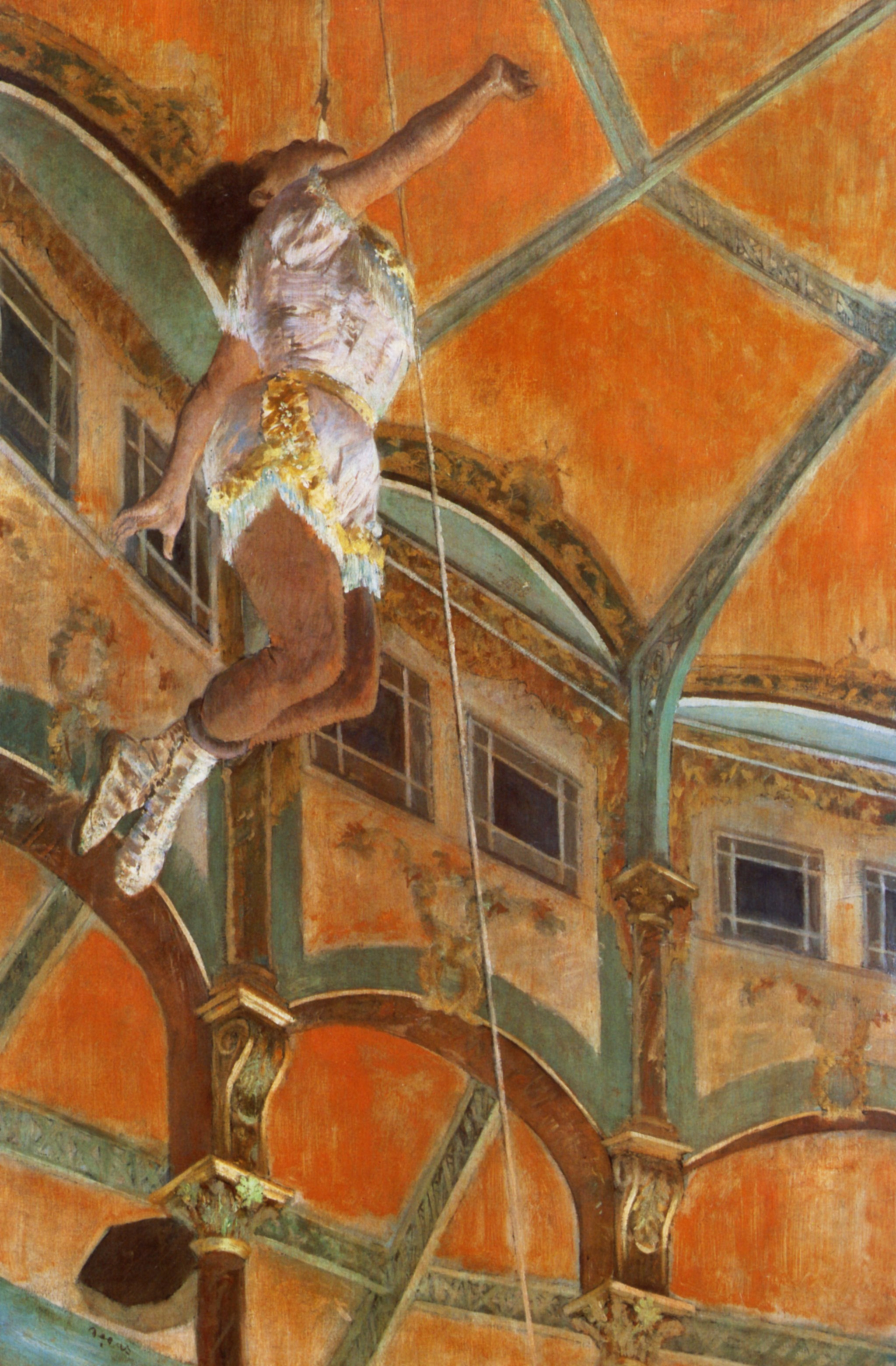May 7, 2013 | museums, The Morgan Library & Museum
The Morgan Library and Museum in New York is transitioning two of their main galleries right now, so if you visit before May 10th, the only temporary installation you’ll find is the second floor room currently holding Degas, Miss La La, and the Cirque Fernando.
The entire exhibit is based on a single painting hung in the center of the back wall: Degas’ “Miss La La at the Cirque Fernando” painted in oil in 1879, and the only work Degas ever painted with a circus subject. As you walk clockwise around the room, you’re first greeted with the pastel and oil studies completed in preparation for the final work, but after you pass the painting, you find Henry Gabriel Ibels’ lithographs of circus rings from the 1860s, followed by late nineteenth century circus posters – two of which feature Miss La La.
Miss La La was an aerialist traveling with the Troupe Kaira who performed for Degas during their appearance at the Cirque Fernando in Paris from December 1878 to February of the following year. In the painting she’s performing one of her signature acts: gripping a rope with her teeth and flying through the air.
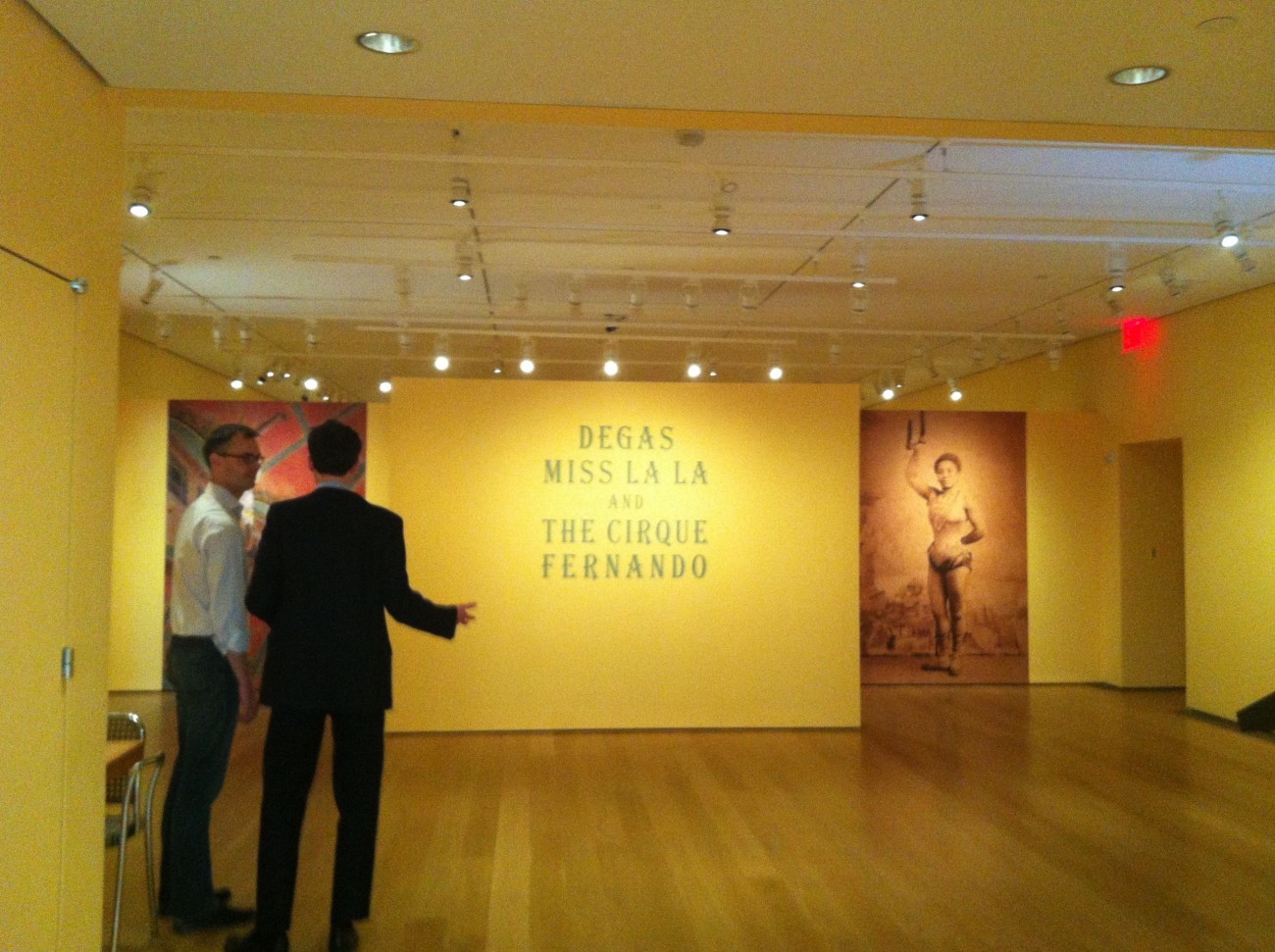
Books lay open under glass in the gallery’s center – a novel about the circus that a friend of Degas wrote around the same time and glossaries of infamous circus performers and tricks of the trade. The exhibit ends with a far-reaching connection to Renaissance representations of the angels in ceiling paintings, calling Miss La La a “secular angel” because her occupation also involves people craning their necks to see her. The four brown wash drawings by Giovanni Battista Tiepolo completed centuries before the rest of the exhibit’s work seemed like too obvious a filler, especially for an institution whose holdings lie predominantly in drawings.
As you leave the exhibit it hits you that the whole thing only takes up half of the room because its entrance is blocked off by large introductory walls. It’s difficult to curate an entire show around a singular work, especially when it’s the only one where the artist worked that subject matter. Seeing the different studies that led up to the final piece is definitely the highlight, but it could have been rounded out with paintings and studies from other artists who painted more circus scenes, even though their names might not have the booming resonance of da Vinci or Degas.
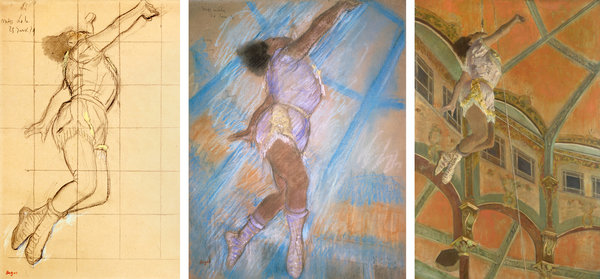
From left, The Trustees of the Barber Institute of Fine Arts, University of Birmingham; Tate, London/Art Resource, New York; National Gallery, London/Art Resource, New York. via NYTimes.
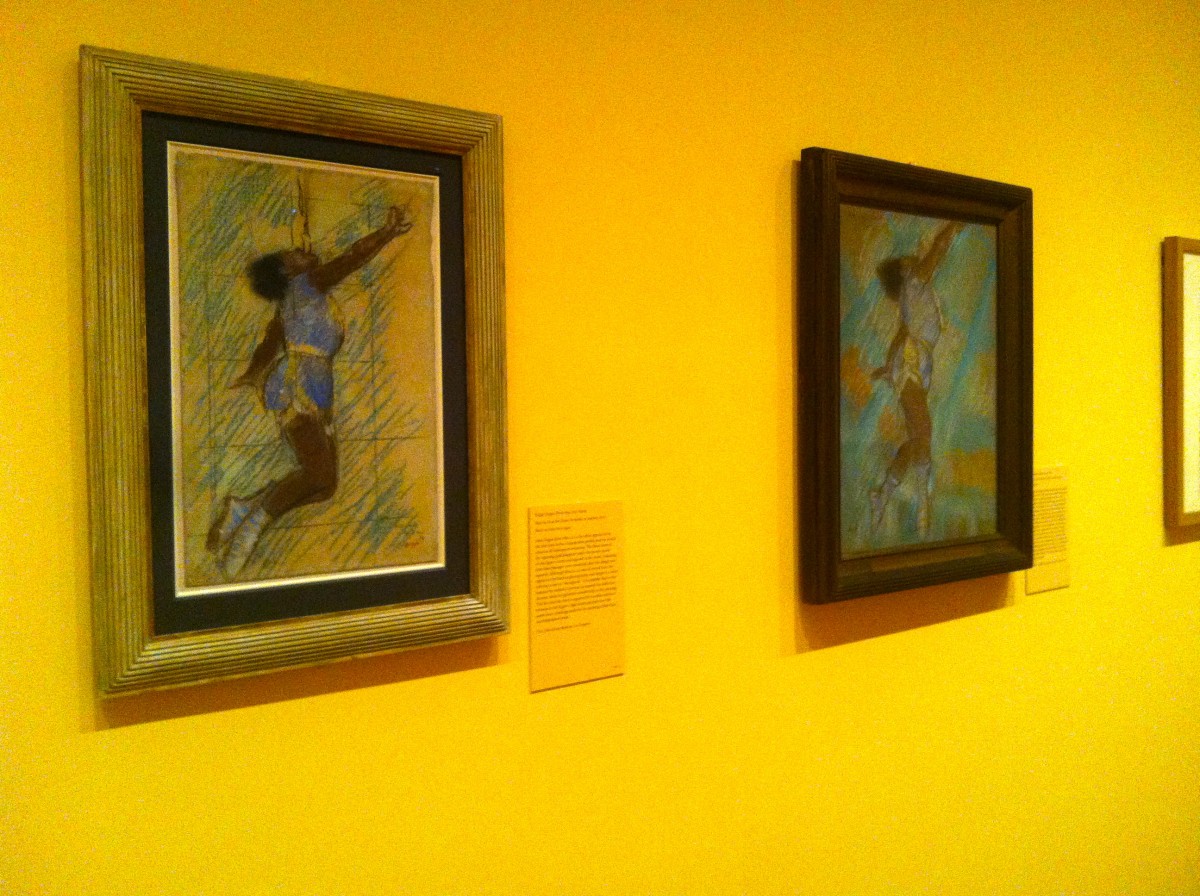
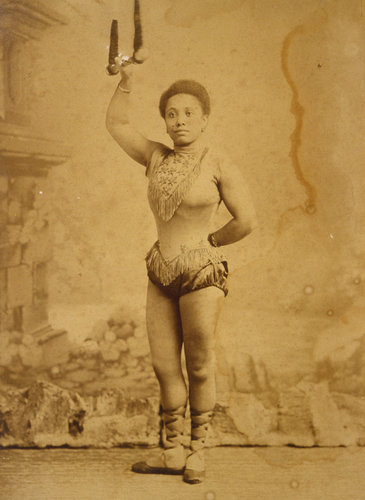
Collection Zimmerli Art Museum at Rutgers University, Museum
Miss La La around 1880. via NYTimes.
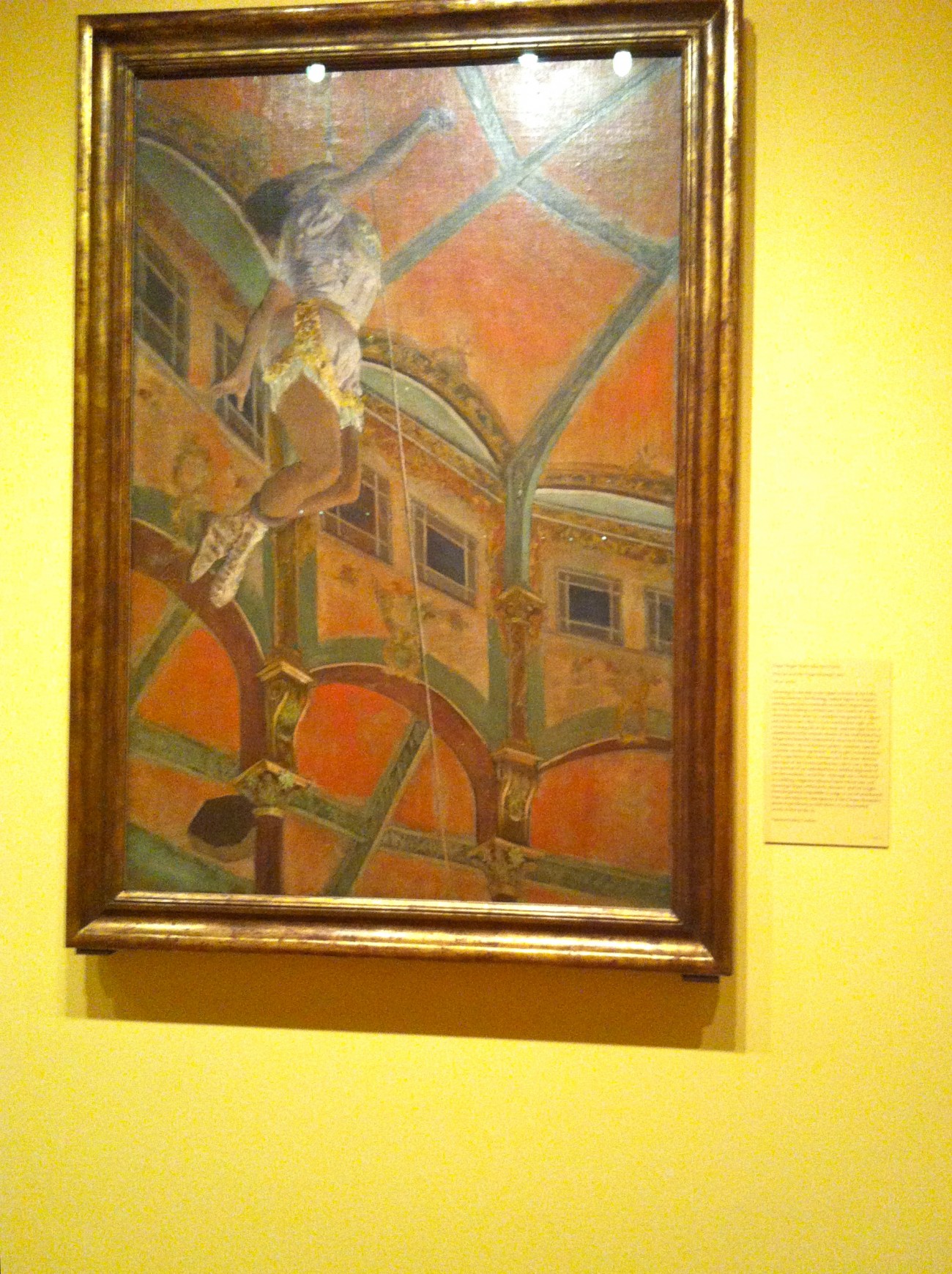
For more about the Morgan’s exhibit, see their website.
GD Star Rating
loading...
May 6, 2013 | photography
German artist Sascha Bokelmann goes by B-O-K-E on his DeviantArt page, where he shares the incredible freeze-frame photo manipulations that turn water droplets into animals and insects. He uses a camera and lots of Photoshop brushwork to convert splashing water into a three-dimensional outline of dragonflies, horses and elephants, and each image takes anywhere between six hours and a week to complete.
Crafting shapes from water turns them into ethereal transparent beings, glowing with the crystal shine of water against dark backgrounds. More than anything though these water sculptures appear temporary – they’re fleeting ghosts of the creatures they represent, shifting and shining like a powerful natural element.
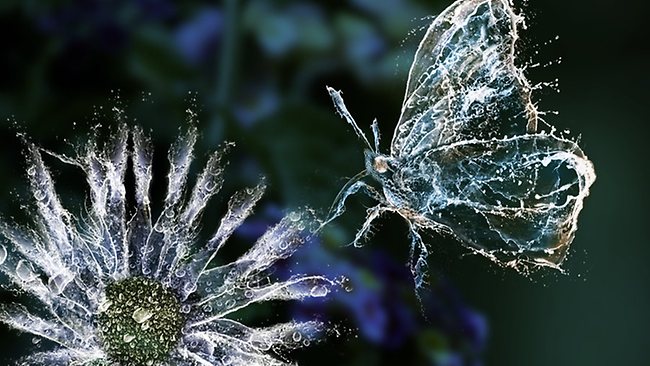

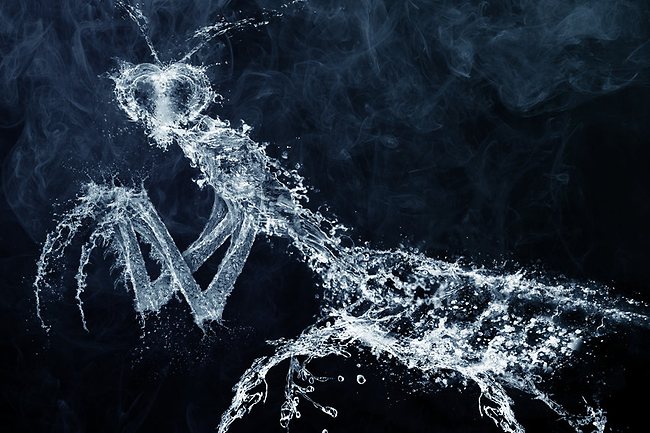
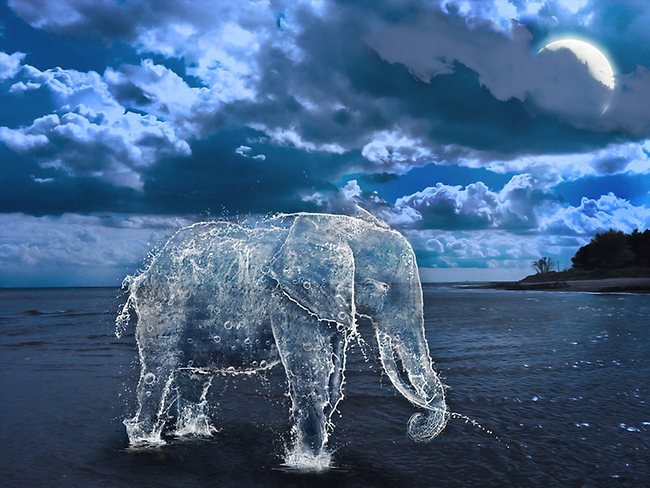
See more of Sascha’s work on his DeviantArt page.
Source: PerthNow.com
GD Star Rating
loading...
Apr 17, 2013 | science/tech
Two Masters students at Switzerland’s Basel Academy of Art have created a robot capable of painting original artwork. The word “original” floats fairly close to the word “random,” prompting the question: can a robot make art? Maybe the robot is the art. After all, art making art is very meta.
Made up of two aluminum arms and an acrylic box on wheels that’s been laser cut according to original design, the robot is named BNJMN – but pronounced like the name Benjamin, the use of acronym playing with the idea that this little nonliving bot can do something only humans are supposed to. Made from the minds of students Danilo Wanner and Travis Purrington, it’s described as a “mobile sensory image production mechanism,” and it’s programmed with 436 lines of code that tell it to roam in search of paper, paint whatever, and sign the work before beginning the cycle over again.
BNJMN has five servomechanisms for movement and two sensors for art-making. It’s able to move straight ahead or rotate, using the light sensor and the touch sensor to find paper by determining the amount of reflected light gathered.
The two aluminum arms are coded with a program called the Expressive Output Cycle, and are designed with a joint and spring system that allows for control over the pressure of each mark made. BNJMN works remotely with 9V batteries, with an Arduino Uno brain on board along with a remote micro-controller. It also has an on/off switch for resting, something living artists probably wish they had from time to time. Only a robot’s off time is definite.
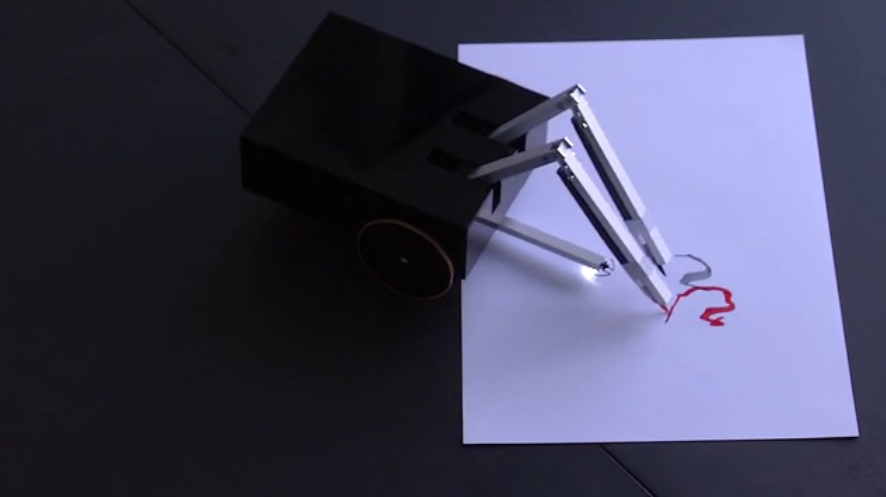
Animal New York described the robot’s work as “minimal and meditative–a bit like Franz Kline without all the drama.” It moves slowly across the table searching for paper, but once the two arms prepare for brush mode, they spring into action, painting rough jagged lines in red and gray. At the end of the creative cycle, the bot moves down to the corner of the paper and draws a squiggle with a line underneath for a signature.
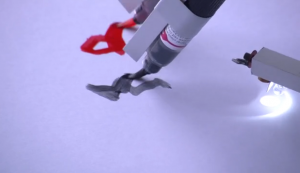
BNJMN is different from all the art-making robots who came before him in that he’s not coded with a predetermined image to draw. He sketches something different on each piece of paper he finds, and even though the work is still coming from a random set of 0s and 1s, the design itself is still technically autonomous from any sort of human interference.
It’s a funny thing for a robot to do – something without emotion creating in a medium that’s propelled forward by feeling and constantly being driven by the human experience. Little BNJMN knows nothing outside of finding paper and making marks on it – one more way to ponder the question “is it art?”
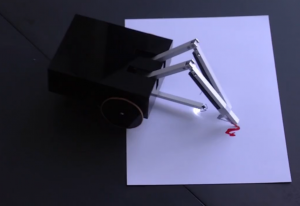 Technical info and featured image via the Creative Applications Network.
Technical info and featured image via the Creative Applications Network.
Robots and art in other places:
GD Star Rating
loading...


